The Prompt Playbook for Industry-Trained Conversational AI
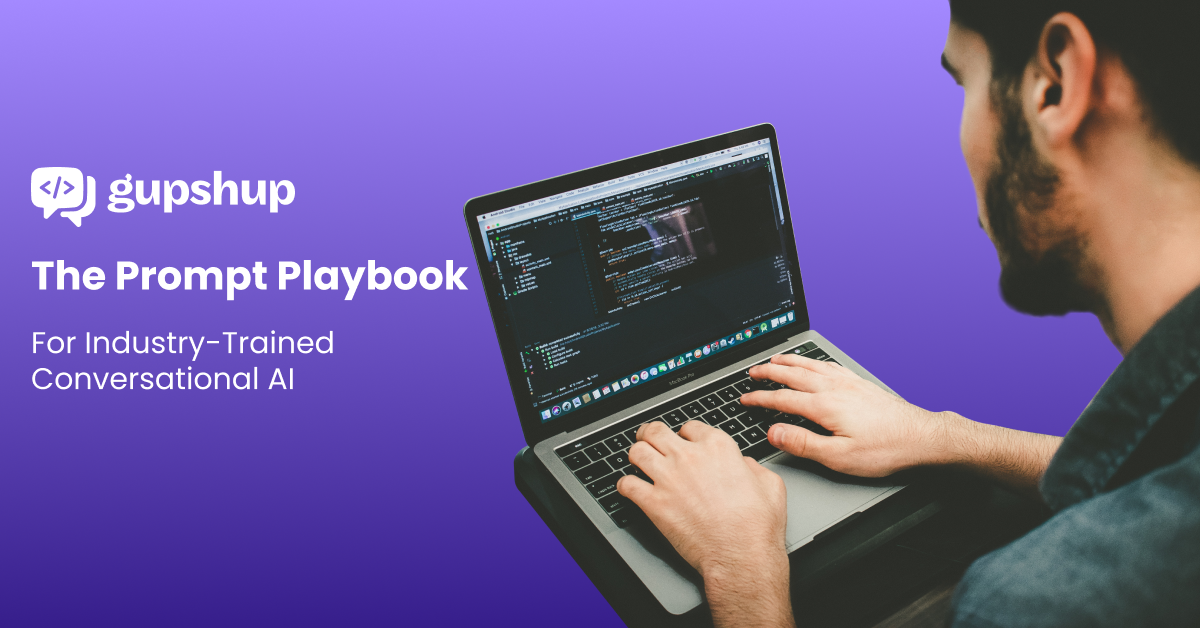
See the power of intelligent conversations for your brand.
At the heart of a Conversational AI platform is a team of skilled prompt engineers who use advanced techniques to create AI Agents that truly understand your business and how your customers interact. These virtual assistants don’t just respond to questions—they understand the true intent and reason to create meaningful interactions that reflect your brand and solve real customer problems.
This insider look reveals how our team uses various prompting methods behind-the-scenes, with before-and-after examples that demonstrate the impact of effective prompt engineering.
The Art and Science Behind Gupshup’s AI Agents
Our prompt engineers use several key techniques to create virtual assistants that feel natural and helpful in customer conversations. Here’s how we apply these methods to create better experiences for your customers:
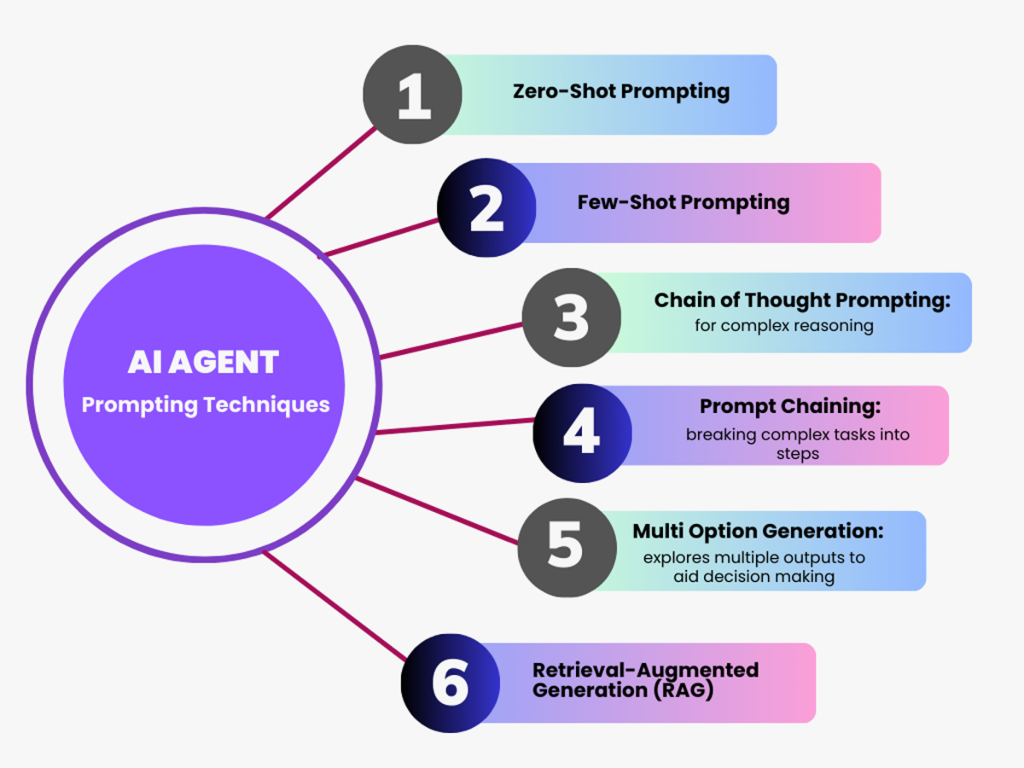
Zero-Shot Prompting
This is the foundation for handling straightforward customer questions that need immediate answers.
For retail, an AI Agent that answers product availability questions without needing examples for every possible item. The AI responds to “Do you have this shirt in size medium?” with accurate stock information pulled directly from inventory systems. Zero shot prompting works well for D2C, retail, ecommerce verticals..
Customers receive instant answers to common questions, improving satisfaction and reducing abandonment rates by 23%.
Few-Shot Prompting
Few-shot prompting provides examples to guide your AI Agent’s responses. Here’s an example for a luxury hotel chain that wants to maintain a premium tone in every interaction. By showing the AI examples of how the brand communicates about bookings, upgrades, and travel advice, the brand makes the agent sophisticated yet approachable.
BEFORE (Zero-Shot):

This response is correct but generic. It doesn’t reflect the brand’s luxury positioning or provide useful details.
AFTER (Few-Shot Implementation):
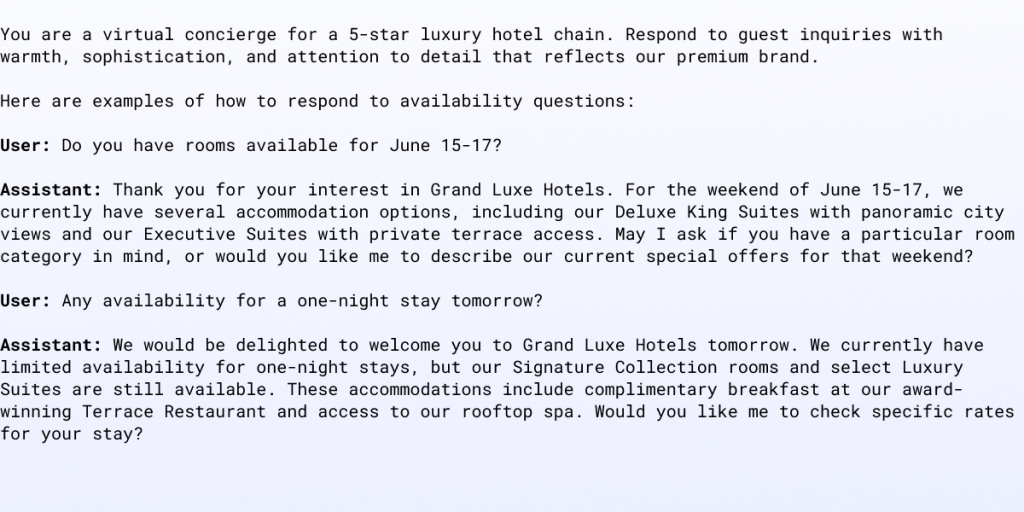
The virtual assistant delivers the same high-quality experience customers expect from trained hotel staff, reducing the need for follow-up queries and providing a more pleasant experience.
Chain of Thought Prompting: For Complex Reasoning
BEFORE (Standard Response):

This response provides the answer but doesn’t show how it was calculated or what interest rate is considered, reducing trust.
AFTER (Chain-of-Thought Implementation):
The actual prompt that our engineers used:

RESULT:

This reduces follow-up calls to human loan officers and improves confidence, resulting in more loan application completions.
Prompt Chaining: Breaking Complex Tasks into Steps
Prompt chaining breaks complex tasks into a sequence of simpler prompts. Here’s how an insurance company’s document Q&A system uses it
BEFORE (Single Prompt Approach):

This response is generic and doesn’t use the actual policy information.
AFTER (Prompt Chaining Implementation):
The actual prompt chain that our engineers used:
Step 1: Document Analysis Prompt

Step 2: Question Analysis Prompt

Step 3: Answer Synthesis Prompt

RESULT: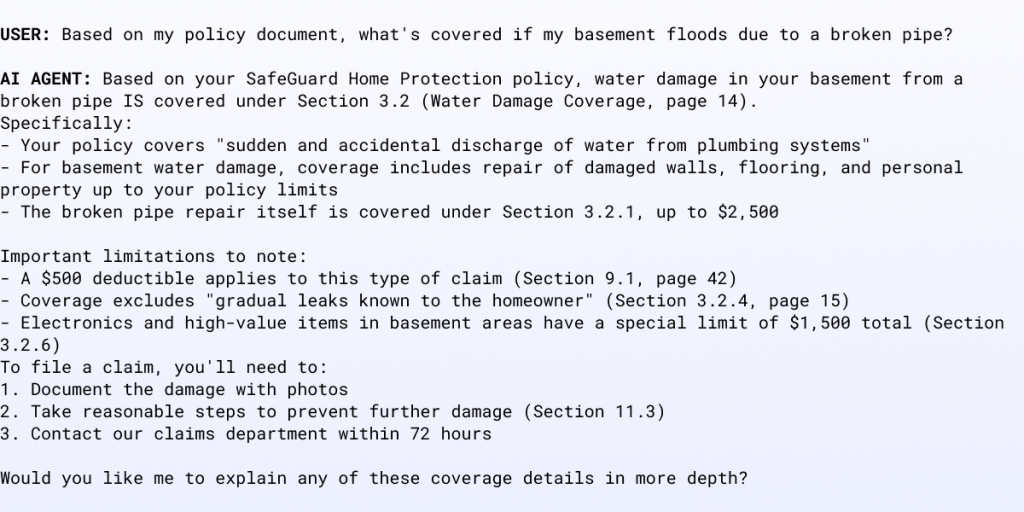
This reduces escalations to human agents for policy questions and improves first-call resolution rate, as the customer better understands the coverage and claims process.
Multi Option Generation: Explores Multiple Outputs to Aid Decision Making
Our prompt engineers use this approach to help virtual assistants consider multiple options before making recommendations.
Here’s how travel booking providers benefit from it:
BEFORE (Linear Response):

This response offers just one approach without exploring alternatives.
AFTER (Multiple Option Implementation):
The actual prompt that our engineers used:
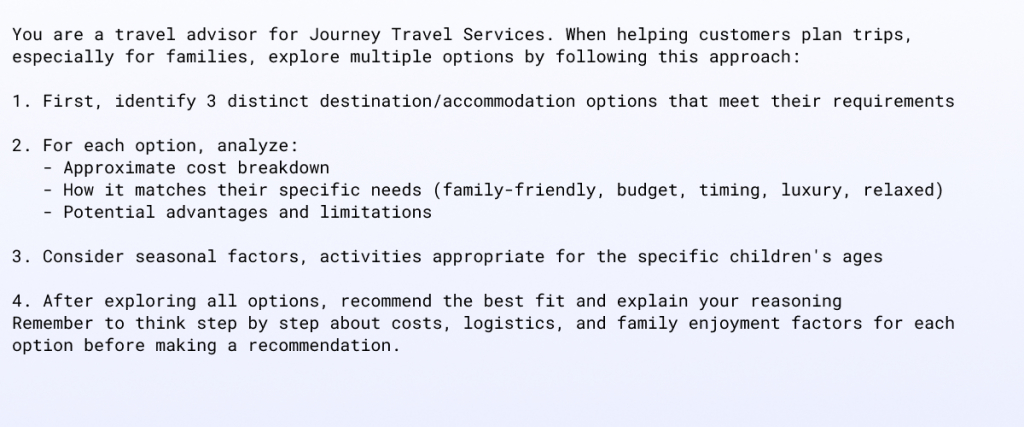
RESULT:
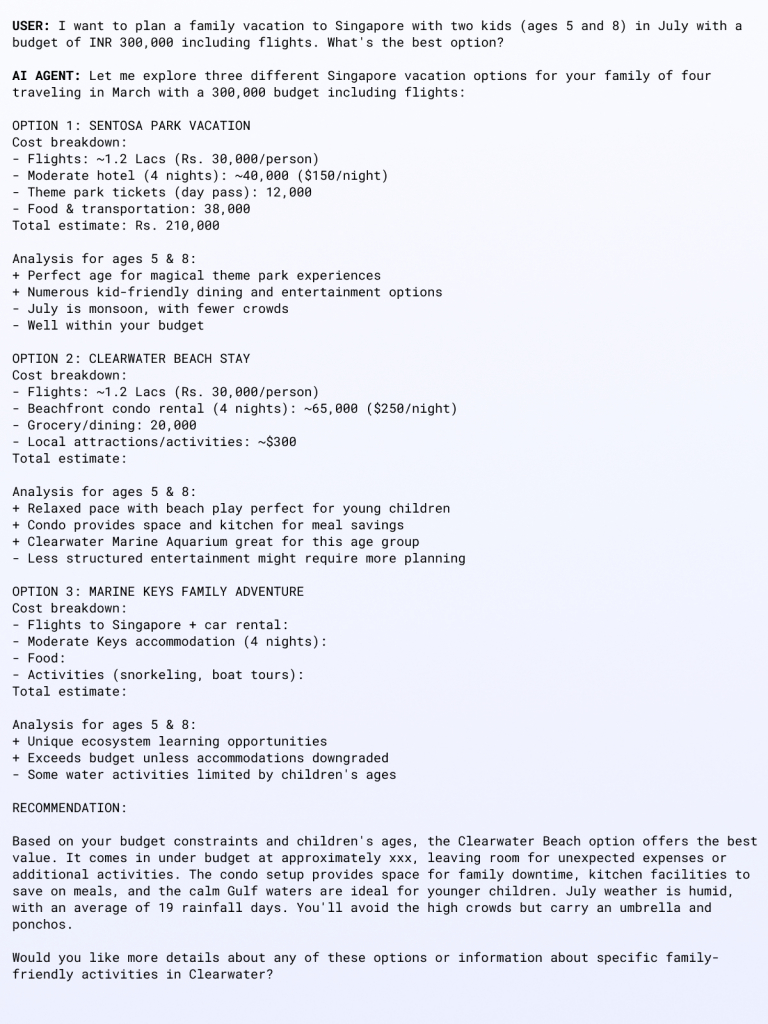
This level of information leads to a higher booking completion rate and a reduction in post-booking changes and cancellations
Retrieval-Augmented Generation (RAG)
RAG allows LLMs to look things up before they answer. The AI access a library or database to fetch the answers and is especially relevant in Q&A over documents or policy data, when information changes frequently or when transparency about information sources is important.
BEFORE:

RESULT:
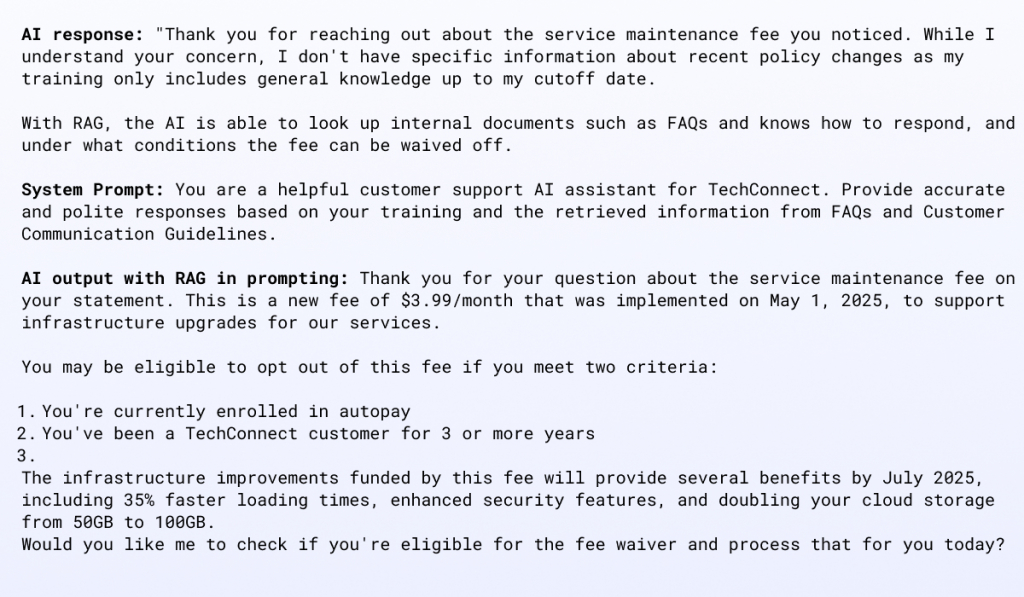
Implementing These Techniques
- Starting with clear use cases: Before engineering prompts, we identify specific customer scenarios where AI assistance would be most valuable.
- Building a prompt testing framework: Creating a system to test variations of prompts against real customer questions to measure effectiveness.
- Layering techniques as needed: Complex customer interactions often benefit from combining multiple prompting methods.
- Maintaining a prompt library: Successful prompts by use case for reuse and refinement.
- Regular reviews and updates: Customer language and needs evolve—and this requires regular reviews of your prompting strategy.
These practical examples show how thoughtful prompt engineering is a necessary step to make AI interactions impactful and useful to the users.
Our team of prompt engineers works with businesses across retail, banking, travel, and other customer-focused industries to implement these techniques at scale. The result is virtual assistants that feel natural to interact with, understand your customers’ needs, and represent your brand effectively.
Ready to elevate your conversational AI? Connect with Gupshup and start building smarter, industry-specific chat experiences today!
PS: Full disclosure—we practiced what we preach in creating this post! The author combined strategic prompts with our AI engineers’ expertise to craft this playbook, giving us firsthand experience with the techniques we’re sharing. We’re right there with you on this AI journey



 +91-9355000192
+91-9355000192 Login
Login





